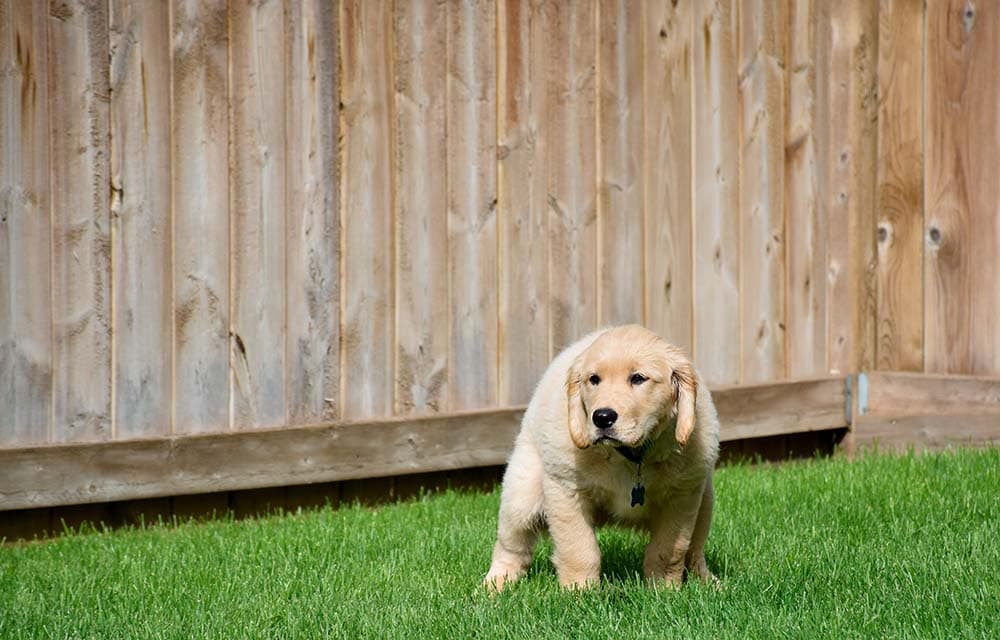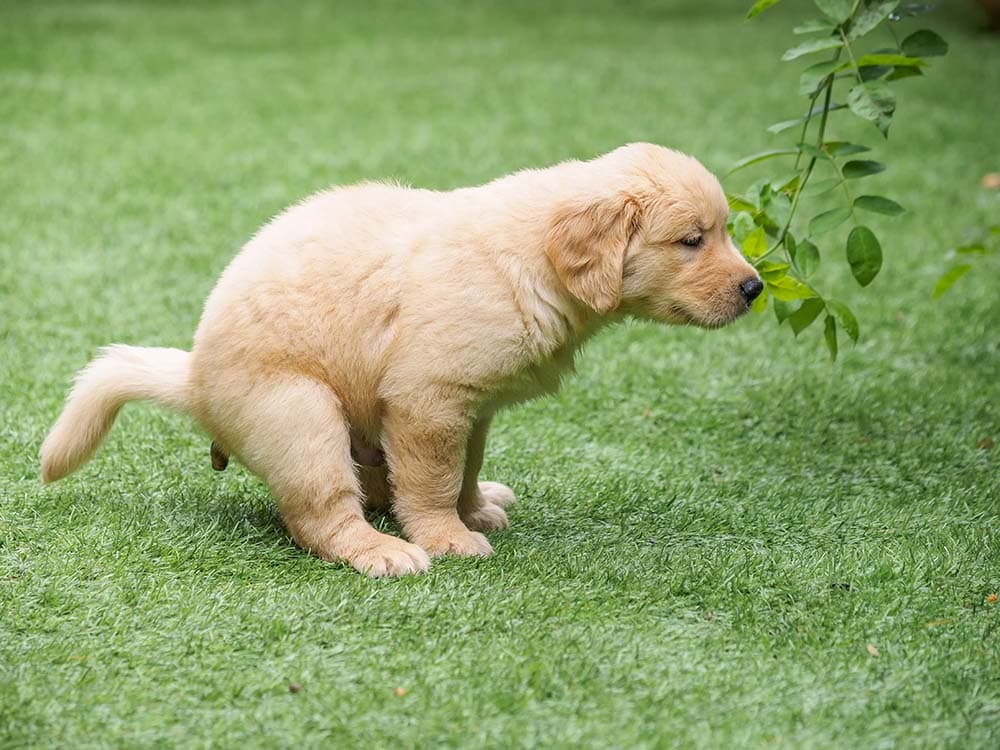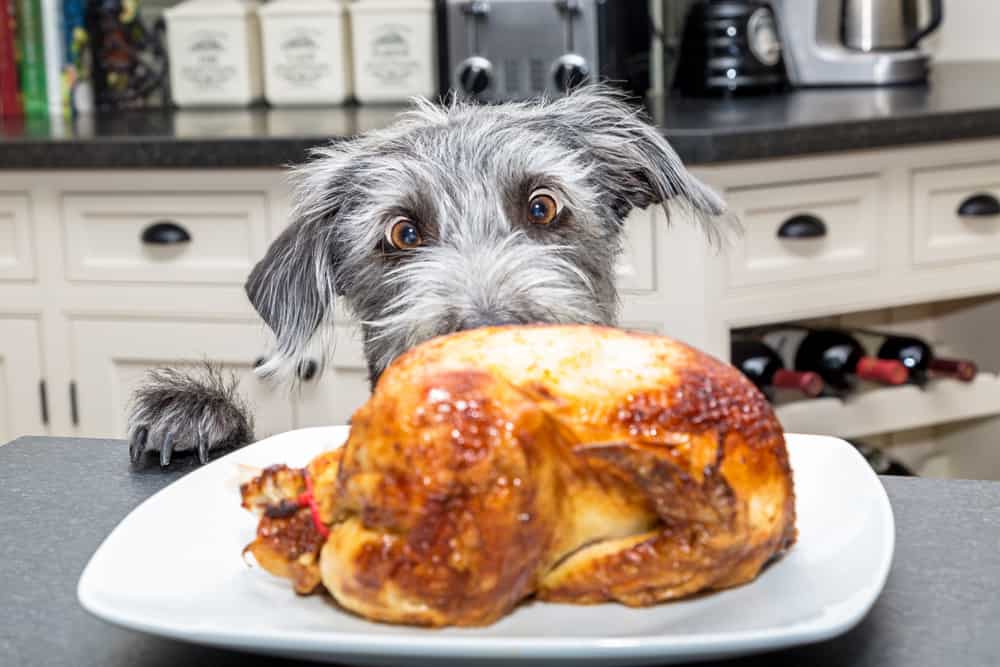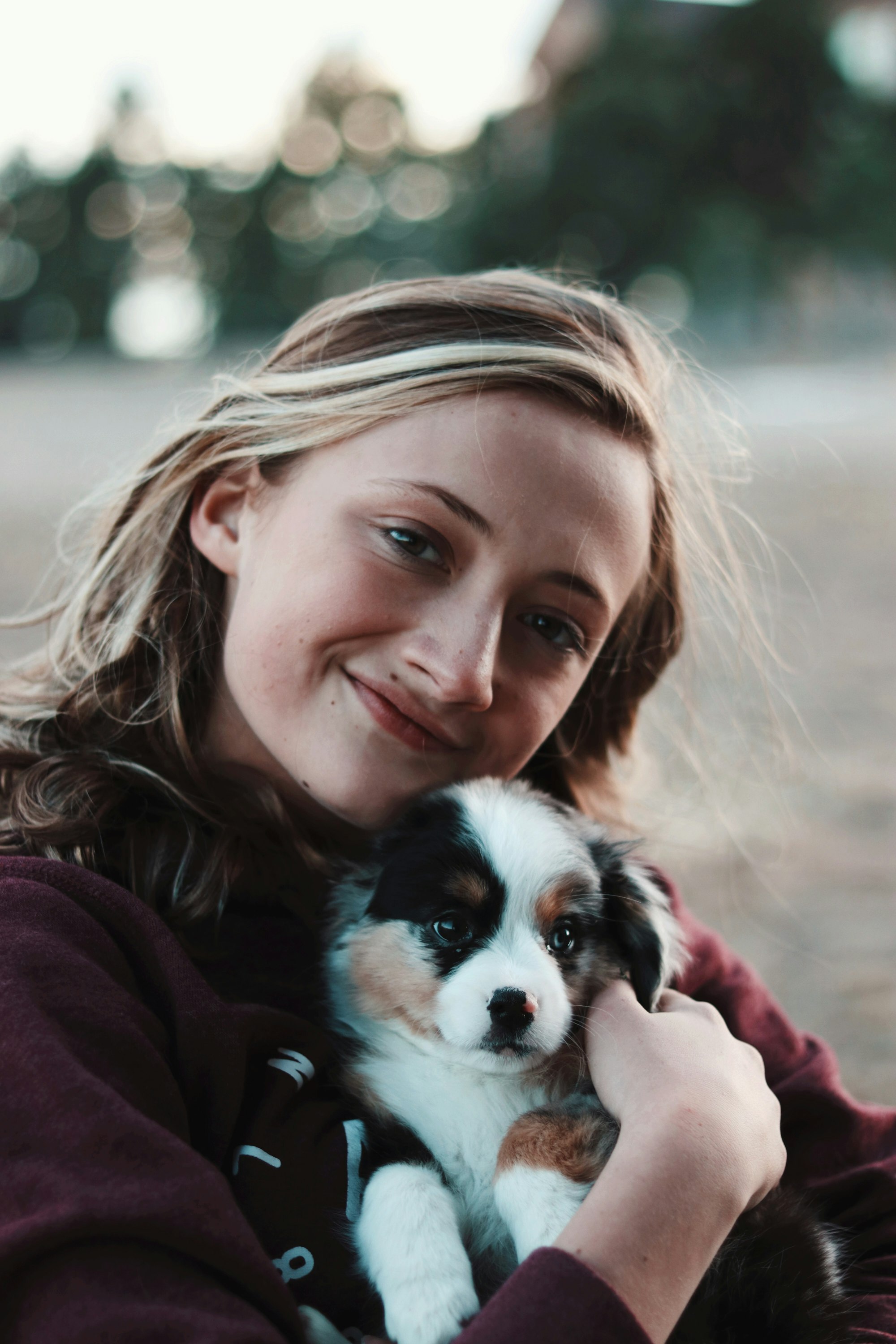Potty training a Golden Retriever puppy can be a challenging task, but with the right approach using 'How to Potty Train a Golden Retriever,' it can be done in as little as two weeks. It's important to understand that puppies have small bladders and need to relieve themselves frequently. Therefore, it's essential to establish a routine and stick to it. This article will provide you with the necessary steps on 'How to Potty Train a Golden Retriever' successfully.
One of the first steps in potty training your golden retriever puppy is to understand their behavior. Puppies will typically need to go potty after eating, drinking, playing, and sleeping. Therefore, it's crucial to keep an eye on your puppy and take them outside when you notice these signs. Additionally, crate training can be an effective way to help your puppy learn to control their bladder and avoid accidents inside the house.
Positive reinforcement is a key aspect of potty training your golden retriever puppy. Praising your puppy when they go potty outside and ignoring accidents inside the house can help reinforce good behavior. Additionally, creating a consistent feeding and potty schedule can help your puppy learn when it's time to go outside. With patience and consistency, you can successfully potty train your golden retriever puppy in no time.

Key Takeaways
- Understanding your golden retriever puppy's behavior is crucial for successful potty training.
- Positive reinforcement and consistency are essential for reinforcing good behavior.
- Crate training and establishing a feeding and potty schedule can help your puppy learn to control their bladder and avoid accidents inside the house.
Understanding Your Golden Retriever Puppy
Golden Retriever puppies are known for being smart and eager to please their owners. They are also known for having a friendly and affectionate demeanor, making them a popular choice for families. However, like all puppies, they require proper training to become well-behaved and obedient dogs.
It's important to understand that puppies have small bladders and may need to go potty frequently, especially during the early stages of training. Golden Retriever puppies can typically hold their bladder for around an hour per month of age, so it's important to take them outside often to avoid accidents inside the house.
Golden Retriever puppies are also known for being highly trainable, which makes the potty training process easier. They are eager to please their owners and respond well to positive reinforcement training techniques.
When training a Golden Retriever puppy, it's important to be patient and consistent. Puppies learn through repetition and positive reinforcement, so it's important to reward good behavior and avoid punishing bad behavior.
In summary, Golden Retriever puppies are smart, eager to please, and highly trainable. With patience, consistency, and positive reinforcement, they can be successfully potty trained in a relatively short period of time.

The Importance of Crate Training
Crate training is an essential part of potty training for your Golden Retriever puppy. It helps to accelerate the potty training process, keeps your puppy safe, and prevents them from developing bad habits like chewing on shoes or furniture.
Crate training is based on the dog's instinctive need to keep its bed area clean. An appropriately sized crate serves as the puppy's bed, and the dog is placed in the crate when the rest of the family cannot supervise it.
One of the most important elements of crate training is the crate itself. You need to ensure that your dog's crate is not only aesthetically pleasing to you but comfortable for them. A Golden Retriever should have a medium-sized crate.
Crate training should be a gradual process. At first, your puppy may be scared of the crate and may whine and cry. However, once they get used to it, they will love it. You should never use the crate as punishment, as it should be a positive and comfortable place for your puppy.
Here are some tips for successful crate training:
- Prepare the crate with a comfortable bed or blanket and some toys.
- Introduce the crate gradually, starting with short periods of time and gradually increasing the duration.
- Use positive reinforcement, such as treats and praise, to encourage your puppy to enter the crate.
- Never force your puppy into the crate, as this can cause fear and anxiety.
- Use the crate as a safe space for your puppy, not just for potty training but also for naps and quiet time.
Overall, crate training is an important aspect of potty training for your Golden Retriever puppy. With patience, consistency, and positive reinforcement, your puppy will learn to love their crate and become potty trained in no time.
Potty Training Basics
Potty training a Golden Retriever puppy can be a challenging task, but it is an essential part of their early development. Here are some basics to keep in mind when beginning the potty training process:
Establish a Schedule
Establishing a consistent schedule is crucial in potty training your Golden Retriever. Puppies have small bladders and need to go outside frequently. A general rule of thumb is to take your puppy outside every 1-2 hours, especially after meals or naps.
Designate a Spot
Designating a specific spot outside for your puppy to use the bathroom is a great way to help them understand where they should go. Take your puppy to the same spot each time, and give them a command such as "go potty" to associate the area with the behavior.
Positive Reinforcement
Positive reinforcement is a powerful tool in potty training your Golden Retriever. When your puppy goes to the bathroom outside, praise them and give them a treat. This positive reinforcement will help them understand that going outside is the desired behavior.
Supervision
Supervision is key in preventing accidents inside the house. Keep your puppy in a crate or confined area when you cannot supervise them. When you are supervising, watch for signs that they need to go outside, such as sniffing, circling, or whining.
Consistency
Consistency is critical in potty training your Golden Retriever. Stick to the same schedule, designated spot, and positive reinforcement techniques. Over time, your puppy will understand what is expected of them and will be able to hold their bladder for longer periods.
By following these basics, you can set your Golden Retriever puppy up for success in their potty training journey. Remember to be patient, consistent, and positive, and your puppy will learn to go outside in no time.

Using Positive Reinforcement
When it comes to potty training a Golden Retriever, positive reinforcement is a highly effective training method. It rewards good behavior instead of punishing bad behavior, which helps to create a positive association with going potty outside.
One way to use positive reinforcement is to offer praise when your Golden Retriever successfully goes potty outside. This can be verbal praise, such as saying "good boy/girl" or "good job," or physical praise, such as petting or giving a belly rub. It's important to be consistent with your praise so that your Golden Retriever knows what behavior is being rewarded.
Another way to use positive reinforcement is to offer rewards, such as treats or playtime when your Golden Retriever successfully goes potty outside. This can help to motivate your Golden Retriever to continue going potty outside and can make the training process more enjoyable for both you and your dog.
It's important to note that rewards should only be given immediately after your Golden Retriever successfully goes potty outside. This helps to create a clear association between the behavior and the reward. If you wait too long to give a reward, your Golden Retriever may not understand what behavior is being rewarded.
Overall, using positive reinforcement is a great way to potty train your Golden Retriever. By offering praise and rewards for good behavior, you can create a positive association with going potty outside and make the training process more enjoyable for both you and your dog.
Creating a Feeding and Potty Schedule
One of the most important steps in potty training a Golden Retriever is creating a feeding and potty schedule. This will help your puppy learn when it's time to go outside and reduce the likelihood of accidents inside the house.
First, it's important to understand that puppies have small bladders and need to go outside frequently. As a general rule, take your puppy outside every 45 minutes to an hour. Puppies also need to go outside after meals, after playtime, and before bedtime.
To create a feeding schedule, divide your puppy's daily food intake into three or four meals. Feed your puppy at the same time every day, and take them outside to go potty immediately after eating. This will help establish a routine and make it easier for your puppy to learn when it's time to go outside.
It's also important to monitor your puppy's water intake. Don't restrict water, but be mindful of when your puppy is drinking. Take your puppy outside to go potty after drinking water, and avoid giving them water right before bedtime.
As your puppy gets older, they will be able to hold their bladder for longer periods of time. Adjust the frequency of potty breaks accordingly, but continue to take them outside after meals and before bedtime.
Overall, creating a feeding and potty schedule is a key component of potty training a Golden Retriever. By establishing a routine and being consistent, you can help your puppy learn when it's time to go outside and reduce the likelihood of accidents inside the house.
Recognizing and Responding to Signs
Potty training a golden retriever requires patience and close observation. In order to successfully potty train a puppy, it's important to recognize and respond to their signs. Here are some common signs to look out for:
- Sniffing around: When a puppy is looking for a place to go potty, they may start sniffing around the room or area.
- Circling: Puppies may also start circling around a specific spot when they need to go.
- Whining or barking: Some puppies may whine or bark to alert their owner that they need to go out.
- Restlessness: Puppies may become restless or fidgety when they need to go.
It's important to respond to these signs quickly and take the puppy outside to their designated potty area. If the puppy is not taken outside in time, they may have an accident inside the house, which can set back the potty training process.
When taking the puppy outside, it's important to use a consistent command, such as "go potty" or "do your business." This will help the puppy associate the command with the action of going potty and make it easier to train them in the future.
It's also important to praise the puppy when they go potty outside. This positive reinforcement will encourage the puppy to continue going potty outside and reinforce good behavior.
Overall, recognizing and responding to a puppy's signs is crucial in successfully potty training a golden retriever. With patience and consistency, owners can help their puppies learn where and when to go potty.

Dealing with Accidents
Even with the best potty training efforts, accidents happen. It's important to handle accidents properly to avoid setbacks in the training process. Here are a few tips on how to deal with accidents:
Clean Accidents Thoroughly
When accidents happen, it's important to clean them up thoroughly to avoid any lingering smells that could attract your pup to the same spot again. Use an enzymatic cleaner to break down the odor molecules and eliminate the scent completely. Avoid using ammonia-based cleaners, as they can actually make the smell worse.
Handle Accidents Calmly
It's important to handle accidents calmly and avoid punishing your pup. Punishing your dog for accidents can actually make the problem worse, as it can create anxiety and fear around potty training. Instead, simply clean up the accident and move on.
Learn from Mistakes
If accidents are happening frequently, it may be a sign that the training process needs to be adjusted. Take note of when accidents are happening and adjust the potty schedule accordingly. It may also be helpful to supervise your pup more closely during the training process.
Overall, accidents are a normal part of the potty training process. By handling them calmly and cleaning them up thoroughly, you can avoid setbacks and continue making progress toward a fully potty-trained pup.
Maintaining Consistency and Patience
Consistency and patience are key when it comes to potty training a Golden Retriever. Maintaining a consistent toilet training routine is essential for success. Taking your dog to the toilet at regular intervals will help them learn when and where they should go potty.
It's important to be patient with your Golden Retriever during the potty training process. Accidents may happen, but punishing your pup can make it harder for them to learn. Instead, clean up any accidents without paying attention to it.
Setting up a designated outdoor area for your dog to go potty can also be helpful. This will help them understand where they should go when they need to use the bathroom. Plus, giving treats or praise for proper behavior can reinforce good habits.
Crate training can also be an effective tool during potty training. When your Golden Retriever is not supervised, keep them in a crate to prevent accidents. Make sure the crate is the right size for your dog, and never use it as a punishment.
Overall, maintaining consistency and patience during the potty training process is essential for success. With the right routine and positive reinforcement, your Golden Retriever will learn where and when to go potty in no time.
Advanced Training Techniques
Once your Golden Retriever has mastered the basics of potty training, it's time to move on to more advanced training techniques. These techniques can help reinforce good habits and prevent any future accidents from occurring.
One effective method is to gradually increase the time between potty breaks. Start by extending the time by 15 minutes each day until your dog can comfortably hold it for several hours. This will teach them to develop better bladder control and reduce the frequency of accidents.
Another technique is to use positive reinforcement during training sessions. Reward your dog with treats or praise when they successfully go potty outside. This will help them associate going potty outside with positive experiences and encourage them to continue the behavior.
You can also try using the AKC's Canine Good Citizen program as a guide for training your Golden Retriever. This program focuses on teaching dogs basic obedience commands and socialization skills, which can help reinforce potty training and prevent any future behavioral issues.
Finally, consider utilizing the NOAH strategy for potty training. This method involves taking your dog outside on a regular schedule and rewarding them for going potty outside. It also involves limiting their access to food and water before bedtime to reduce the likelihood of accidents.
By using these advanced training techniques, you can ensure that your Golden Retriever becomes a well-behaved and well-trained member of your family.

Ensuring Safety and Comfort
When potty training a Golden Retriever, it is essential to ensure their safety and comfort. This will help to create a positive environment for the puppy, making the training process easier and less stressful.
One way to ensure safety is to use a leash when taking the puppy outside to go potty. This will prevent the puppy from running off and getting into dangerous situations. Additionally, using a pen or playpen can provide a safe space for the puppy to play and rest when not being supervised.
Comfort is also important during potty training. A comfortable house or crate can provide a safe and cozy place for the puppy to sleep and relax. It is important to make sure the crate or house is the appropriate size for the puppy, allowing them to stand up, turn around, and lie down comfortably.
When introducing the puppy to their new crate or house, it is important to make it a positive experience. Placing treats and toys inside can help the puppy associate the space with positive feelings.
In addition to providing a comfortable space, it is important to monitor the puppy's behavior and adjust accordingly. If the puppy is showing signs of discomfort or anxiety, such as whining or pacing, it may be necessary to adjust the training approach or seek advice from a professional trainer.
By ensuring safety and comfort during potty training, Golden Retriever puppies can learn quickly and with minimal stress.

Common Challenges and Solutions
Potty training a Golden Retriever can be a challenging task, but with patience and consistency, it can be accomplished. Here are some common challenges that owners may face during the process and some solutions to help overcome them.
Challenge: Accidents in the House
One of the most common challenges in potty training a Golden Retriever is accidents in the house. This can be frustrating for owners, especially when it seems like the puppy is not making any progress.
Solution: Consistency and Positive Reinforcement
To overcome this challenge, it is essential to be consistent with the training routine. Take the puppy outside frequently, especially after meals and naps, and reward them with praise and treats when they go potty outside. It is also crucial to supervise the puppy when inside and interrupt any attempts to go potty inside by quickly taking them outside.
Challenge: Difficulty with Housetraining
Some Golden Retrievers may have difficulty with housetraining, which can make the process take longer than expected.
Solution: Paper Training
If housetraining is proving to be a challenge, paper training can be a helpful solution. This involves placing puppy pads or newspapers in a designated area inside the house and gradually moving them closer to the door leading outside. Eventually, the puppy will learn to associate going potty with the designated area and can then be transitioned to going outside.
Challenge: Inconsistency with Training
Inconsistency with training can be a significant challenge in potty training a Golden Retriever. This can include not taking the puppy outside frequently enough or not rewarding them consistently for going potty outside.
Solution: Establish a Routine and Stick to It
To overcome this challenge, it is crucial to establish a routine and stick to it. Set a schedule for taking the puppy outside and reward them every time they go potty outside. Consistency is key in reinforcing good habits and helping the puppy learn what is expected of them.
Overall, potty training a Golden Retriever requires patience, consistency, and positive reinforcement. By being aware of these common challenges and solutions, owners can help their puppies successfully learn to go potty outside.
Conclusion:
In wrapping up, potty training a Golden Retriever requires patience, consistency, and positive reinforcement. While each dog's journey might differ slightly, with dedication and the right techniques, you can guide your furry friend towards successful and confident potty habits. Remember, every mistake is a learning opportunity, and every success is a step closer to a well-trained companion. Celebrate the milestones and remain patient during the challenges. Before you know it, your Golden Retriever will master the art of potty training, ensuring a harmonious living environment for both of you.
Frequently Asked Questions
- What are some effective methods for potty training a Golden Retriever puppy?
Consistency and positive reinforcement are key when it comes to potty training a Golden Retriever puppy. Take your puppy outside frequently, especially after meals and naps, and praise them when they go potty outside. You can also use a command word like "go potty" to help them associate the behavior with the command.
- How long does it typically take to potty train a Golden Retriever?
The time it takes to potty train a Golden Retriever can vary depending on the individual puppy and the consistency of the training. Some puppies may catch on quickly and be fully potty trained within a few weeks, while others may take several months to fully grasp the concept.
- Are there any particular challenges to potty training Golden Retrievers compared to other breeds?
Golden Retrievers are known for their intelligence and eagerness to please, which can make them easier to train in some ways. However, they are also known for their love of food and can be easily distracted by treats during training. Additionally, they have a tendency to chew on things, so it's important to keep an eye on them during the potty training process to prevent accidents.
- What should I do if my Golden Retriever puppy keeps having accidents inside?
If your Golden Retriever puppy keeps having accidents inside, it's important to remain patient and consistent with the training. Take them outside more frequently and keep a closer eye on them when they're inside. Clean up accidents thoroughly with an enzyme cleaner to remove any scent that may attract them to the same spot again.
- Is crate training a good option for potty training a Golden Retriever?
Crate training can be an effective option for potty training a Golden Retriever, as it can help them learn to hold their bladder and bowels for longer periods of time. However, it's important to make sure the crate is the appropriate size for your puppy and that they have plenty of opportunities to go outside and relieve themselves.
- Are there any tips for successfully potty training a Golden Retriever in an apartment or small space?
If you're potty training a Golden Retriever in an apartment or small space, it's important to take them outside frequently and provide plenty of opportunities for exercise and play. You can also use puppy pads or a designated indoor potty area to help them learn where it's appropriate to go potty inside. Consistency and positive reinforcement are key to success in any potty training situation.






